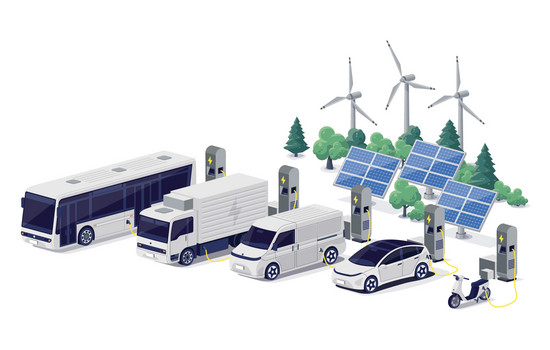€19 billion

THE GP JOULE-MAGAZINE NR. 13 / NOVEMBER 2022
According to a study: if 50 gigawatts more solar and wind power were connected to the grid, consumers in Germany would have paid around 19 billion euros less for electricity in the past twelve months.
Russia’s invasion of Ukraine, the effects on natural gas supplies and the outages of French nuclear power plants – these have all had a massive impact on electricity prices recently. They rose and rose. The price of a megawatt hour (MWh) on the dayahead market in Germany in August 2022 was around €465. One year earlier, in September 2021, the price was around €128.
The federal government hurriedly put together aid packages, and protests about rising energy prices and overall inflation grew ever louder. And GP JOULE wanted to know: could this price increase have been curbed if the energy transition had not been slowed down for years? Specifically, how would electricity prices in Germany have developed if more renewable energies had been available?
To find out, GP JOULE commissioned the independent energy market experts from Energy Brainpool, who prepared a short study. The scenario: 20 more gigawatts (GW) of onshore wind energy and 30 GW of solar energy would have been installed and on the grid. What impact would this have had on our electricity price? The outcome: renewable energies significantly reduce the price of electricity. The higher wind and solar power capacities would have resulted in an average monthly price decrease of €37 per MWh, or 17 per cent, between September 2021 and August 2022. “The potential savings for a household with an annual consumption of 3,000 kWh, is €111 plus VAT,” the study reveals. The authors of the study also write: “The effect on the entire national economy is immense.” Between €19.3 and €19.7 billion less would have had to have been spent on electricity in this country in the past twelve months.
The additional generation of electricity from solar and wind energy would of course also be a gain for climate protection. In the assumed scenario, around 8 TWh of electricity from natural gas,15 TWh from brown coal and 16 TWh from hard coal could have been replaced.
“The study clearly shows that renewables are the solution,” says Ove Petersen, CEO and co-founder of GP JOULE: “It shows what the solution for permanently affordable energy prices, for security of supply, for independence and for mitigating the damage that the climate change we are causing will bring.”
The 20 GW of onshore wind energy and 30 GW of additional solar energy installed capacity that the study scenario assumed would not have been at all unrealistic to achieve in the past decades. On the contrary. According to the EEG 2023, 41 GW of onshore solar and wind power capacity is to be added in Germany in 2024 alone, 55 GW in 2026, 59 GW two years later, and so on.
“This means that if we focus now on the legally prescribed expansion path for renewables, we will solve the electricity market crisis no later than in 2024 and will have displaced gas and coal by then,” says Petersen.
![[Bitte in "English" übersetzen:] [Bitte in "English" übersetzen:]](/fileadmin/_processed_/8/9/csm_gp_jamesblog_14_7a870ae12b.jpg)




![[Bitte in "English" übersetzen:] [Bitte in "English" übersetzen:]](/fileadmin/_processed_/a/6/csm_GP_29.01.24_ZweiVonUns-Olaf_header_2d7a81f45d.jpg)